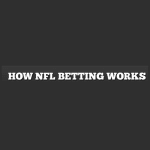Understanding the Money Line
The money line is a common term in sports betting that indicates the odds associated with a particular team winning a game. It is a straightforward way for bettors to understand the likelihood of a team’s victory based on the positive or negative value assigned. When encountering a positive money line, such as +150, it signifies the potential profit that a $100 bet could yield if that team wins. On the other hand, a negative money line, like -200, implies the amount that one needs to bet in order to win $100.
In essence, the money line simplifies betting by offering a clear representation of the potential outcomes and associated payouts. Positive money lines offer insight into the underdog’s potential to secure victory and provide an opportunity for bettors to earn a higher return on their investment. Conversely, negative money lines indicate the favored team and the amount needed to be staked in order to win a specified profit amount. Understanding how to interpret these money lines is crucial for making informed betting decisions in sports wagering.
Positive and Negative Money Lines
Positive Money Lines indicate the amount of profit a bettor stands to make on a $100 wager. For instance, if the Money Line on a team is +150, it means that a $100 bet on that team would result in a $150 profit if successful. In general, positive Money Lines are associated with underdogs in a competition, reflecting the potential for a higher payout relative to the wager amount.
On the other hand, Negative Money Lines signify the amount a bettor needs to wager in order to win $100. For example, if a team has a Money Line of -200, a bettor would need to stake $200 to secure a $100 profit. Negative Money Lines usually correspond to favorites in a matchup, indicating a higher probability of winning but offering a lower potential payout compared to positive Money Lines.
Calculating Payouts with the Money Line
When betting on sports, understanding how to calculate payouts with the money line is crucial for making informed decisions. The money line represents the odds for a particular team to win a game, with positive and negative values indicating the favorite and underdog, respectively. To calculate the potential payout for a money line bet, you need to consider both the odds and the amount of your wager.
For positive money lines, such as +150, the number represents how much profit you would make on a $100 bet. So, if you placed a $100 bet on a team with a +150 money line and they won, you would receive a total payout of $250 ($100 initial stake + $150 profit). On the other hand, negative money lines like -200 show how much you need to bet to win $100. For example, if you bet $200 on a team with a -200 money line and they win, your total payout would be $300 ($200 initial stake + $100 profit). Understanding these calculations can help you determine the potential payout and make more informed betting decisions.
Implications of Positive Money Lines
Positive money lines in sports betting indicate the underdog in a matchup. When a team or player is assigned a positive money line, it signifies that they are not favored to win the game or event. In essence, betting on the underdog with a positive money line offers a higher potential payout compared to the favored team or player with a negative money line.
For bettors, positive money lines present an opportunity to capitalize on perceived upsets or undervalued outcomes. By placing a wager on a team or player with a positive money line and successfully predicting the underdog’s victory, bettors stand to earn a substantial return on their investment. However, it is essential for bettors to carefully assess the competitive landscape and make informed decisions when betting on positive money lines to maximize their potential profits.
Implications of Negative Money Lines
Negative money lines in sports betting signify the favored team or player in a particular matchup. When the money line is negative, it implies that the team or player is expected to win the game. As a bettor, placing a wager on the favorite with a negative money line will yield a smaller payout compared to betting on the underdog with a positive money line.
Moreover, negative money lines indicate the amount of money you need to bet in order to win $100. For instance, if a team has a money line of -150, you would need to wager $150 on that team to win $100 back. Understanding how negative money lines work is crucial for making informed betting decisions and maximizing potential profits in the sports betting market.















